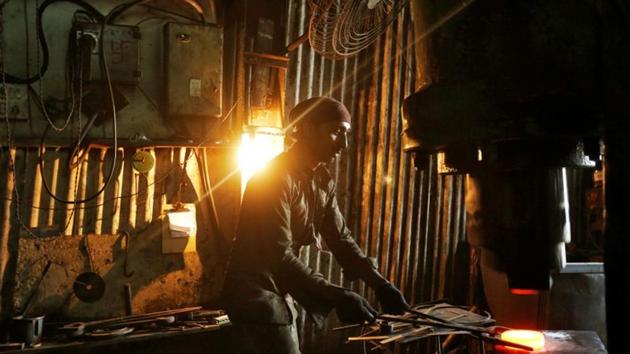At 8.2%, GDP grows at its quickest pace in 2 years
Govt hails structural reforms after manufacturing boost.
The Indian economy grew at the fastest pace in two years during the first quarter of the ongoing fiscal year (Q1 2019), according to data released by the Central Statistical Office, reaffirming anecdotal evidence of a recovery in growth, and providing political ammunition to the National Democratic Alliance government ahead of key state elections later this year, although analysts said some of the improvement is due to low growth in the corresponding period last year (the so-called base effect).

“India’s rapidly growing GDP is a reflection on the transformative changes being ushered in by Prime Minister Shri @narendramodi’s government. Indian economy is witnessing unprecedented growth in every sector, from manufacturing to agriculture,” Bharatiya Janata Party (BJP) president Amit Shah said on Twitter.
Annual growth in GDP during the first quarter of the ongoing fiscal year accelerated sharply to 8.2% from 5.6% in the same period of the previous fiscal year. The growth figures have beaten the 7.6% estimate based on a Reuters poll forecast.
Gross value added (GVA), which is value of production net of taxes, grew at 8% during this period. This is the fourth consecutive quarter in which GDP growth has maintained an upward trajectory.
Sector-wise growth figures for GVA show that manufacturing and construction have registered the biggest improvements. Growth in these sectors has increased by 15.3 and 6.9 percentage points respectively over previous year’s figures. Agricultural growth, which mainly captures the 2017-18 Rabi season activity, increased from 3% to 5.3% between Q1 2019 and Q1 2018.
To be sure, there is an element of base effect in the latest growth figures. GDP growth in Q1 2018 had fallen to 5.6%, the lowest since Q4 2014 on account of disruption from demonetisation. Manufacturing growth in Q1 2018 had gone into negative territory.
Finance minister Arun Jaitley posted on Twitter, “India’s GDP for the first quarter this year growing at 8.2% in otherwise an environment of global turmoil represents the potential of New India.” Finance secretary Hasmukh Adhia tweeted, “The GDP growth rate of 8.2% for the Q1 (April-June) of fiscal year 2018-19 indicates clearly that several structural reforms introduced such as GST have started giving rich dividends.The growth in manufacturing sector (13.5%) also indicates broad based recovery of demand.”
Congress leader and former finance minister P Chidambaram shared a chart showing growth trends in the last two years. “Happy that the rate of growth has quickened, but look at the table once again. Q1 growth rate is based on the lowest base (5.6) in the last 8 quarters,” he said.
The Congress and the BJP recently got into a war of words over GDP after the Committee on Real Sector Statistics, which was chaired by Sudipto Mundle, emeritus professor at the National Institute of Public Finance and Policy, said in a report submitted to the National Statistical Commission last month that India actually grew its GVA by over 10% in 2006-07. While this isn’t the official so-called back series, it was immediately pounced upon by the Congress, which lead the United Progressive Alliance government at the time this growth was achieved.
From the expenditure side, the composition of GDP remained broadly the same during Q1 2019 and Q1 2018, with private consumption accounting for 55% of the total GDP.
Pronab Sen, India’s former chief statistician, described the GDP numbers as being on expected lines. While this shows a continuing process of economic recovery, the presence of base effect calls for caution in declaring that India has placed itself in a trajectory of 8% plus growth, he said. While impressive growth performance in agriculture and construction is a welcome trend given the high labour intensity of these sectors, services recording a lower than average growth is an important development, Sen added. As tailwinds from a favourable base effect weaken from the next quarter onwards, GDP growth is expected to come down slightly, he said.
In response to a question on whether acceleration in economic growth will increase the probability of a rate hike by the Reserve Bank of India in the near future, Sen pointed out that while headline inflation numbers show that inflation is within acceptable limits, GDP deflator has grown by more than 6% between Q1 2018 and Q1 2019. This shows that inflationary pressures might be stronger than what is captured by the benchmark index, Sen added.






